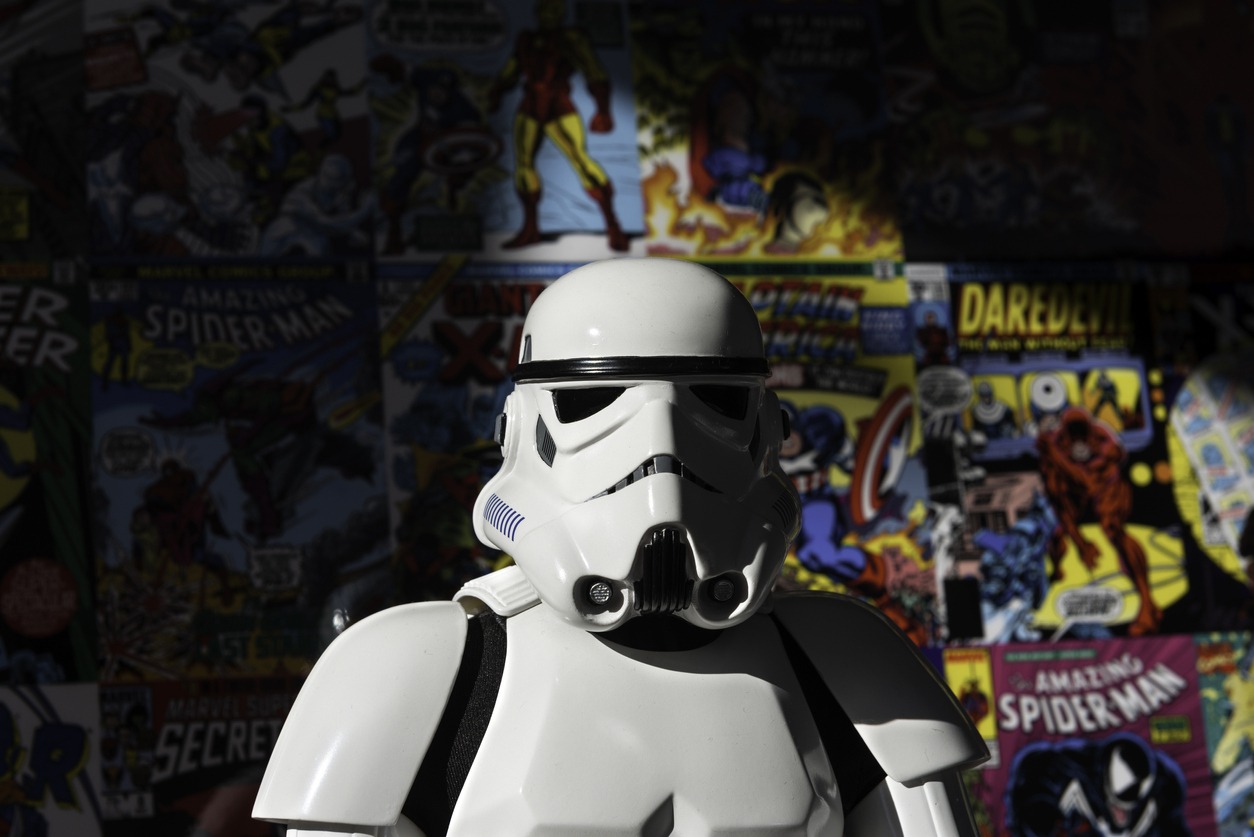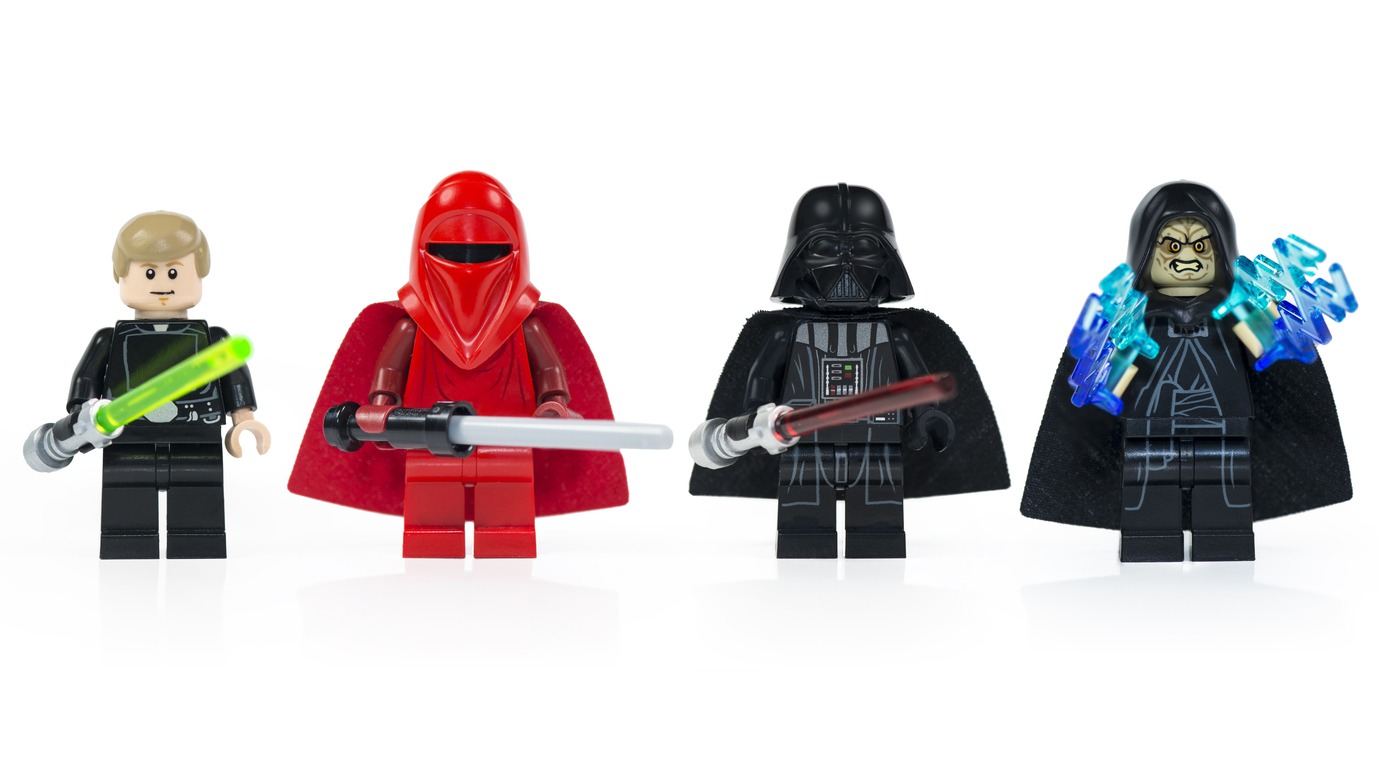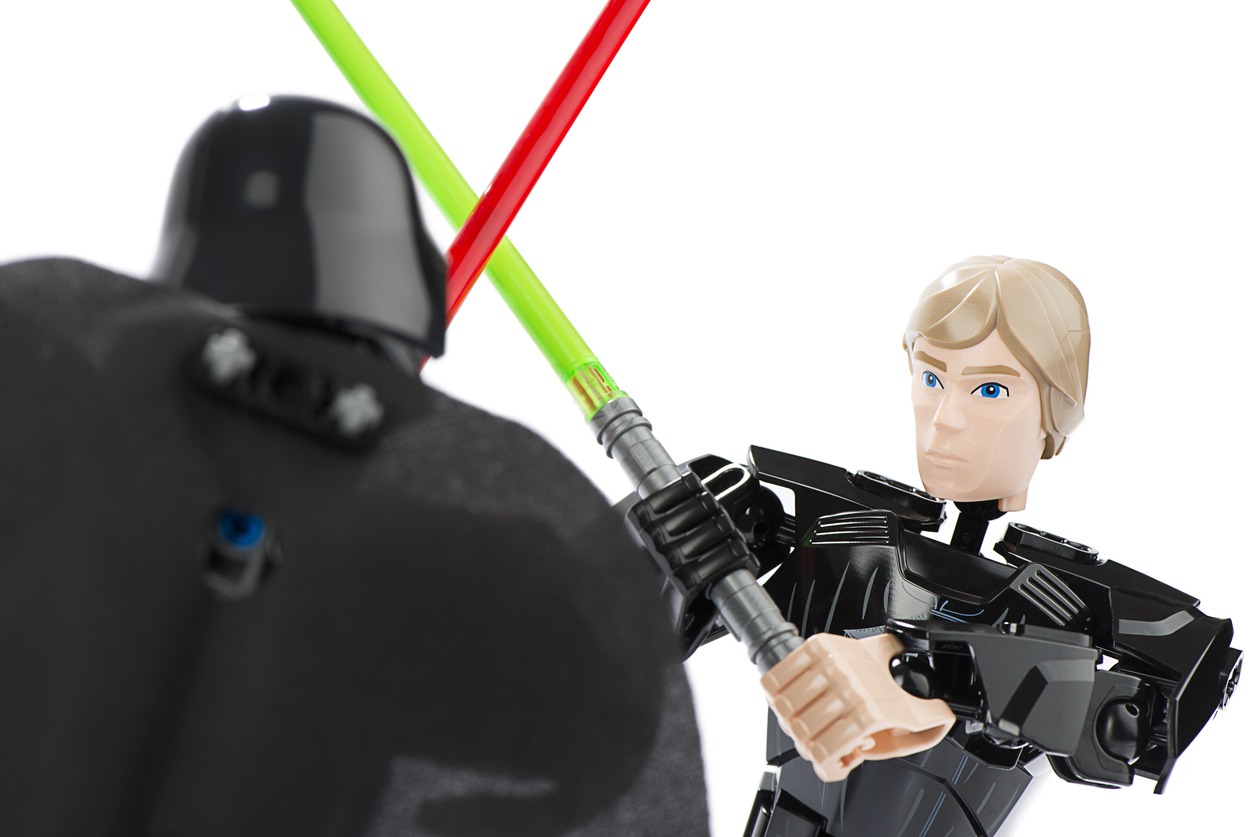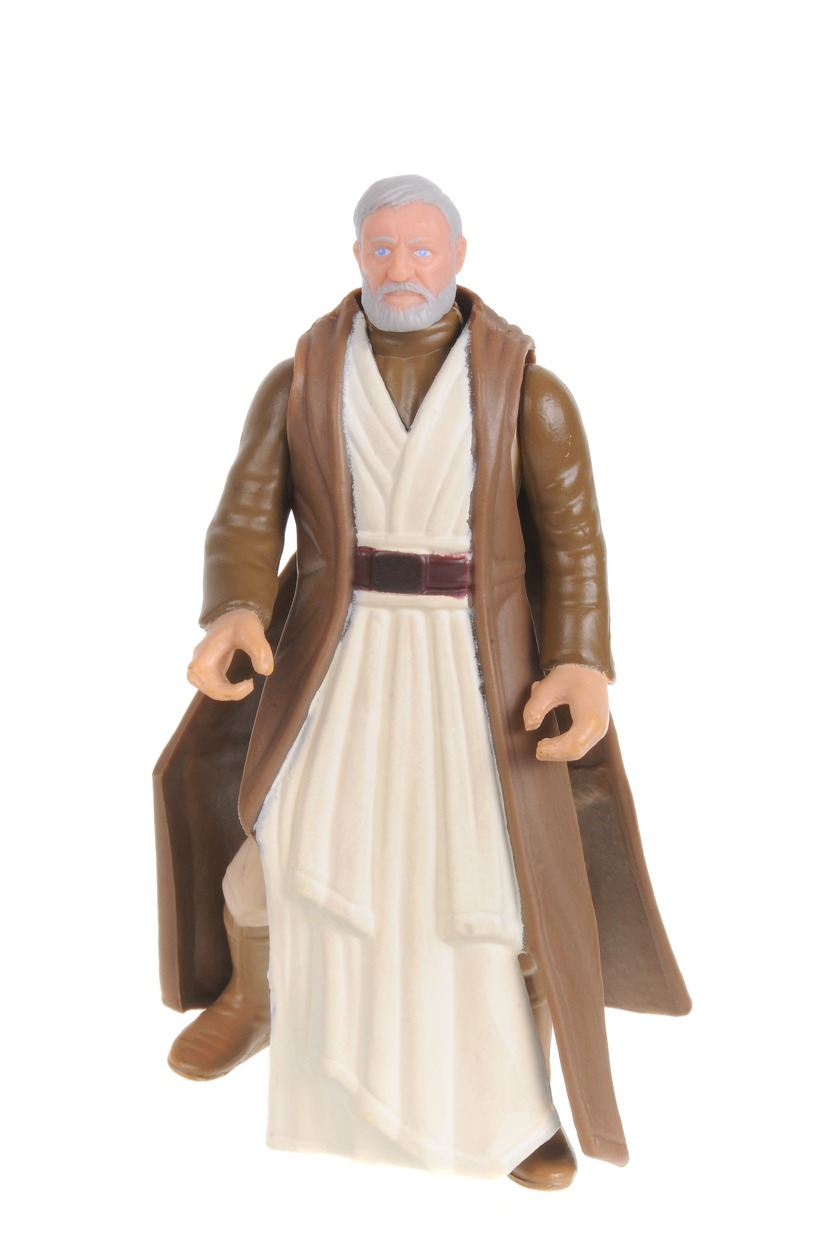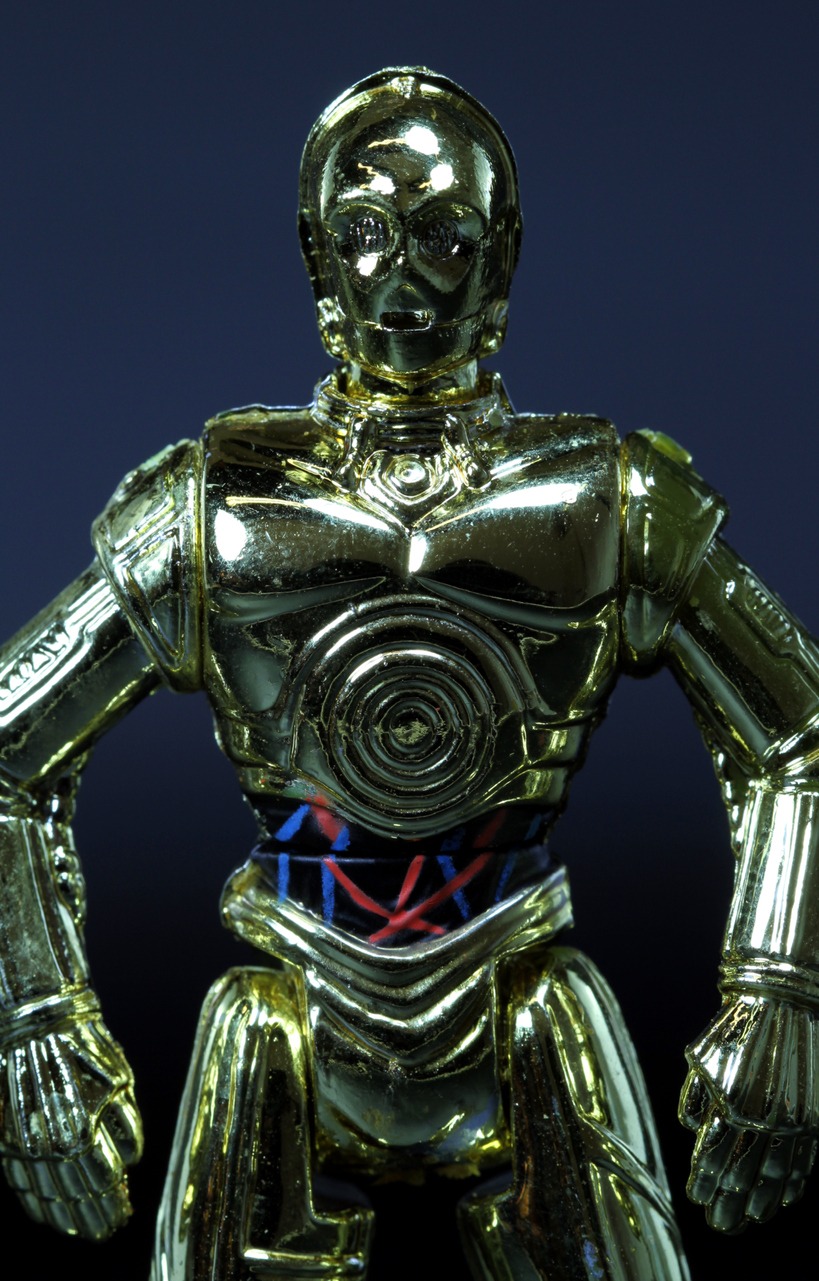One of the highest-grossing media franchises of all time, George Lucas’ Star Wars is more than just a series of movies. It’s an epic sci-fi saga that has become a pop culture phenomenon, capturing the hearts of audiences throughout generations. What started as a movie expanded into various films and other media, including TV series, video games, comic books, novels, theme park attractions, and more!
Let us take you through the world of Star Wars in a galaxy far, far away. If you’re just starting to explore this space saga, this will help you get started to understand the Star Wars universe. But if you’ve been a fan for a long time – perhaps you’ll learn something new!
We’ll talk about how it’s become a big part of popular culture, the stories it tells across its movies, and how it’s become a lasting name in movies. Whether you’ve been a fan for a long time or are just starting to explore this space saga, come along as we explore the exciting and inspiring universe of Star Wars, where every part of its galaxy is filled with amazing stories and important lessons.
Star Wars: An Overview
If you’re one of the few percentages of the population who don’t know what Star Wars is about, here it is: at its core, it’s about the struggle between the Jedi, who represent the Light Side of the Force, and the Sith, who represents the Dark Side. The Force is a mystical energy that gives certain individuals special powers.
The central storyline, especially in the original and prequel trilogies, focuses on the Skywalker family. Anakin Skywalker, who becomes Darth Vader, and his children, Luke and Leia, play important roles in the fate of the galaxy.
The Star Wars adventure began in 1977 when the original Star Wars film (later renamed Episode IV: A New Hope) hit the theaters. It introduced audiences to the timeless battle between the forces of good and evil. There was a farm boy named Luke Skywalker, a sassy droid named C-3PO, a rugged smuggler with a heart of gold named Han Solo, and a giant hairy walking carpet, too—Chewbacca! Together, they’re up against the menacing Darth Vader and the sinister Empire.
Fast forward a few years to the early ’80s, and thrilling sequels were released, such as The Empire Strikes Back and Return of the Jedi. The Rebel Alliance faces even darker challenges, with revelations about Luke’s lineage and the redemption of Vader. Spoiler alert: Ewoks played a huge role in defeating the Empire on the forest moon of Endor. Who would have thought those little furballs could be so heroic?
Then came the ’90s, and George Lucas decided to go back in time with the prequel trilogy. The Phantom Menace, Attack of the Clones, and Revenge of the Sith delved into the origins of Darth Vader, the rise of the Empire, and the fall of the Jedi. It was an exciting time – we witnessed pod-racing, lightsaber duels, and the tragic transformation of Anakin Skywalker into the iconic Sith Lord.
After a brief hiatus, the franchise returned with a vengeance in the late 2000s. Disney acquired Lucasfilm, and a new era of Star Wars was born. The sequel trilogy—starting with The Force Awakens, followed by The Last Jedi and The Rise of Skywalker—introduced a fresh cast of characters, like scavenger Rey, conflicted Kylo Ren, and the adorable BB-8. The saga continued with new battles, unexpected twists, and a satisfying conclusion to the Skywalker epic.
But that’s not all! The Star Wars universe also expanded beyond the main saga with standalone films like Rogue One and Solo. These films explored untold stories, adding depth to the whole story of the Star Wars universe. The small screen got in on the action, too, with the release of the animated series The Clone Wars and Rebels.
And just when you thought it couldn’t get any better, The Mandalorian burst onto the scene; it introduced the enigmatic bounty hunter Din Djarin and the irresistibly cute Grogu (aka Baby Yoda). This hit Disney+ series became an instant fan favorite. You can get an overview of these titles below.
The Setting of the Star Wars Universe
The Star Wars franchise depicts the adventures of characters in a galaxy far, far away, where ancient Jedi and Sith once duked it out with lightsabers that could cut through steel. In their galaxy, space travel between planets is common, thanks to lightspeed hyperspace technology.
Virtually all kinds of Earth biomes have a counterpart as a Star Wars planet, which, in some cases, is bustling with different kinds of alien life. And it’s not just planets; there are asteroid fields and colorful nebulae, too. The spacecraft in Star Wars is different and iconic, too – ranging from tiny starfighters to huge Star Destroyers and, of course, those massive Death Stars. They communicate using screens for chats and holograms and can send messages across hyperspace.
The universe in Star Wars is kind of like ours but with more relaxed rules of physics, which lets all sorts of imaginative stuff happen. A big part of this is the Force, a mystical energy that’s all about life itself. It’s almost like a cosmic force that holds everything together. People who are strong with the Force can do amazing things like move objects with their minds, see the future, read thoughts, and even mess with energy. The Force is super powerful – basically, it can do anything.
Iconic Planets and Locations
The Star Wars saga takes place on different planets, including:
- Tatooine: A desert planet known for its twin suns and the home of Anakin and Luke Skywalker. It is famous for its Mos Eisley cantina and the Boonta Eve Classic pod race.
- Coruscant: The galaxy’s capital, a city-covered planet, and the political hub, home to the Galactic Senate and the Jedi Temple.
- Hoth: An icy, snow-covered planet known for the Rebel Alliance’s Echo Base and the site of a major battle against the Galactic Empire.
- Endor: A forest moon inhabited by Ewoks and the location of the second Death Star’s shield generator.
- Naboo: A planet with lush landscapes and beautiful cities, the home of Queen Amidala and Emperor Palpatine.
- Dagobah: A misty, swampy, and remote planet where Yoda lived in exile and trained Luke Skywalker.
- Alderaan: A peaceful planet known for its beauty, tragically destroyed by the Death Star.
- Bespin: Home to Cloud City, a gas planet where Han Solo was captured and frozen in carbonite.
- Kashyyyk: The forested home world of the Wookiees, including Chewbacca.
- Mustafar: A volcanic planet, known for the epic duel between Obi-Wan Kenobi and Anakin Skywalker.
- Jakku: A desert planet similar to Tatooine, and the home of Rey in The Force Awakens.
- Starkiller Base: A planet converted into a massive weapon by the First Order in The Force Awakens.
The Force
The Force is the mystical energy field that binds the Star Wars galaxy together, shaping destinies and influencing the fates of beings across its cosmos. It’s the cosmic glue that connects everything – from the smallest Ewok to the mightiest Jedi. Those sensitive to the Force can tap into its power, gaining extraordinary abilities like enhanced reflexes, telekinesis, and a sixth sense that guides their actions. It has two sides—the Light Side and the Dark Side.
The Light Side
At the light side of the Force comes the Jedi, the guardians of peace and justice in the galaxy. They use the Force selflessly for the greater good. They embody compassion, serenity, and a sense of duty. They practice balance and wisdom and resist the temptations that the Dark Side throws their way.
A Jedi might meditate under a waterfall or use the Force to help them in acrobatic lightsaber duels. They are the heroes audiences root for.
The Dark Side
Now, let’s flip the switch to the Dark Side. It’s a tempting, seductive power that promises strength but at a cost. It’s a path that twists and corrupts, often leading those who succumb to it down a dark and destructive road. Anakin Skywalker’s fall to become Darth Vader is a classic example of the allure of the Dark Side.
The Sith order embraces the Dark Side and harnesses the Force for personal gain, power, and domination. They are fueled by anger and hatred, making them formidable adversaries. Unlike the Jedi, the Sith encourages the use of emotions to fuel their powers and seek to manipulate others to achieve their goals.
The Epic Saga: The Original, Prequel and Sequel Trilogies
To get an overview of the Star Wars saga, here are the essential trilogies to know about:
The Original Trilogy
Formerly marketed as the Star Wars trilogy – now colloquially called the “original trilogy – it’s the series that started it all. It serves as the second act of the nine-episode Skywalker saga. By the way, fans collectively refer to the original trilogy as the Skywalker saga to distinguish them from other spin-offs set within the same universe.
1. Episode IV: A New Hope (1977)
The first Star Wars film, originally titled Star Wars, was released on May 25, 1977. The story revolves around Luke Skywalker, a farm boy who dreams of a bigger life. With the help of Princess Leia, smuggler Han Solo, and wise old Obi-Wan Kenobi, he takes on the evil Galactic Empire. The Death Star gets blown up, Darth Vader makes an unforgettable entrance, and the Force is officially with us.
2. Episode V: The Empire Strikes Back (1980)
The Empire Strikes Back, which premiered on May 21, 1980, is where the Rebels are on the run, and Luke learns the shocking truth about his parentage. Han Solo gets frozen in carbonite, Yoda drops some serious wisdom, and the Empire gains the upper hand. Dark times, indeed.
3. Episode VI: Return of the Jedi (1983)
Released on May 25, 1983, Return of the Jedi is where The Rebel Alliance launches a daring mission to rescue Han, and Luke confronts his father and the Emperor. Ewoks join the party, the Death Star 2.0 gets destroyed, and Anakin Skywalker finds redemption.
Prequel Trilogy
Colloquially referred to as the prequels, these films are the first act of the Skywalker saga. It’s all based on the backstories of the Jedi and the Sith and what the Empire and the Republic were.
4. Episode I: The Phantom Menace (1999)
Released in theaters on May 19, 1999, The Phantom Menace was much-awaited by fans of the original trilogy. In this movie, you can see Jedi Qui-Gon Jinn discovering young Anakin Skywalker on Tatooine, a planet not known for producing Jedi. Podracing, lightsaber duels, and the epic Battle of Naboo follow. The Sith make a comeback, and Darth Maul’s double-bladed lightsaber becomes an instant fan-favorite.
5. Episode II: Attack of the Clones (2002)
The second prequel hit the theaters on May 16, 2002. Anakin and Padmé fall in love while political turmoil brews across the galaxy. We witness the creation of the clone army, lightsaber battles on Geonosis, and the beginning of the Clone Wars. The stage is set for the rise of the Sith.
6. Episode III: Revenge of the Sith (2005)
The last of the prequels launched on May 19, 2005. The Republic falls, and the Jedi are betrayed. Anakin succumbs to the Dark Side, becoming Darth Vader. The galaxy witnesses the birth of the Galactic Empire. Tragedy, epic lightsaber duels, and the infamous “I have the high ground” moment mark the dark turn in the Star Wars saga.
Sequel Trilogy
Now produced by Lucasfilm Ltd. and distributed by Walt Disney, this trilogy serves as the final act of the Skywalker saga.
7. Episode VII: The Force Awakens (2015)
The first installment, The Force Awakens, was released on December 18, 2015, after a 10-year hiatus. Set thirty years after the fall of the Empire, a new threat emerges—the First Order. A scavenger named Rey discovers her Force sensitivity, Finn defects from the First Order, and Kylo Ren wields a cross-guard lightsaber. The search for Luke Skywalker kicks off, and the galaxy is thrust into a new conflict.
8. Episode VIII: The Last Jedi (2017)
The Last Jedi, which premiered on December 15, 2017, follows Rey as she trains with Luke Skywalker, but she finds out he’s not exactly the mentor she hoped for. Kylo Ren struggles with his past, and the Resistance is on the run. Cue unexpected twists, lessons in failure, and a lightspeed kamikaze maneuver that shakes the galaxy. Luke’s epic showdown with Kylo is both tragic and iconic.
9. Episode IX: The Rise of Skywalker (2019)
The final episodes of the nine-part Skywalker saga, which premiered on December 16, 2019, were about the final battle between the Resistance and the First Order. Rey’s parentage is revealed, Palpatine returns, and the galaxy faces its greatest threat. The trilogy concludes with a climactic lightsaber duel, redemption arcs, and the promise of a new era. The Force lives on.
Anthology Series
The Star Wars anthology series is an expansion to the original Star Wars saga, offering another perspective on the events and characters of the Star Wars universe. Unlike the films of the Skywalker saga, the anthology films delve deeper and explore untold narratives that weave through the original timeline.
- Rogue One: A Star Wars Story (2016)
Rogue One premiered on December 16, 2016. Set just a week before the events of Episode IV, Rogue One follows a group of rebels on a mission to steal the Death Star plans. Jyn Erso leads a diverse cast in a gritty war film that seamlessly ties into the original trilogy. And that Vader scene at the end? Chills.
- Solo: A Star Wars Story (2018)
This Hans Solo-centric film, which premiered on May 25, 2018, dives into the early years of Han Solo, showing us how he acquired the Millennium Falcon, met Chewbacca, and embarked on his smuggling adventures. With a charming new Solo in Alden Ehrenreich and a scene-stealing Donald Glover as Lando Calrissian, the film adds layers to the beloved rogue.
Jedi Characters
Now that you’re acquainted with the saga, you might as well get to know the iconic Jedi – the heroes of the Star Wars universe. Here are some of the most unforgettable Jedi to ever grace the silver screen:
- Luke Skywalker: The farm boy turned galaxy-saving Jedi Master. From his humble beginnings on Tatooine to confronting the Emperor, Luke’s journey is the heart of the original trilogy. His development from a wide-eyed adventurer to a wise and powerful Jedi is a classic hero’s tale.
- Obi-Wan Kenobi: The embodiment of Jedi coolness. Whether he’s training Anakin Skywalker, battling Darth Vader, or offering sage advice from beyond the grave, Obi-Wan is the epitome of the calm, collected, and occasionally sassy Jedi Master.
- Yoda: Size matters not, and wisdom comes in small packages. Yoda is the grandmaster of the Jedi Order, with centuries of knowledge and a unique speech pattern that has become as legendary as his lightsaber skills. “Do or do not. There is no try.”
- Mace Windu: Samuel L. Jackson brought the thunder to the Jedi Order with Mace Windu. Known for his purple lightsaber and unyielding commitment to the Light Side, Mace was a no-nonsense Jedi who led with authority and style.
- Anakin Skywalker (Pre-Darth Vader): Before he became the iconic Sith Lord, Anakin was a talented Jedi with a heart full of passion and a penchant for podracing. His tragic fall to the Dark Side is a central pillar of the Star Warssaga.
- Ahsoka Tano: The breakout star of the animated series “The Clone Wars.” Ahsoka is Anakin Skywalker’s former Padawan who grows into a powerful Force user in her own right. Her journey from apprentice to independent warrior is a fan-favorite arc.
- Qui-Gon Jinn: The wise and unconventional Jedi Master who discovered a certain slave on Tatooine. Qui-Gon’s adherence to the Living Force and his mentorship of Obi-Wan left a lasting impact on the Jedi legacy.
- Rey: The central character of the sequel trilogy. Rey’s scavenger-to-Jedi journey is a modern take on the classic hero’s tale, and her connection to the Force brings a new chapter to the ongoing Star Warssaga.
- Kit Fisto: With his green skin, tentacle beard, and infectious grin, Kit Fisto stands out as one of the more memorable Jedi. Known for his aquatic homeworld and prowess in lightsaber combat, he’s a fan favorite among the prequel-era Jedi.
- Ki-Adi-Mundi: Recognizable by his elongated skull, Ki-Adi-Mundi was a Jedi Master and a member of the Jedi High Council. His unique appearance and calm demeanor made him a distinctive presence in the prequel trilogy.
Sith Characters
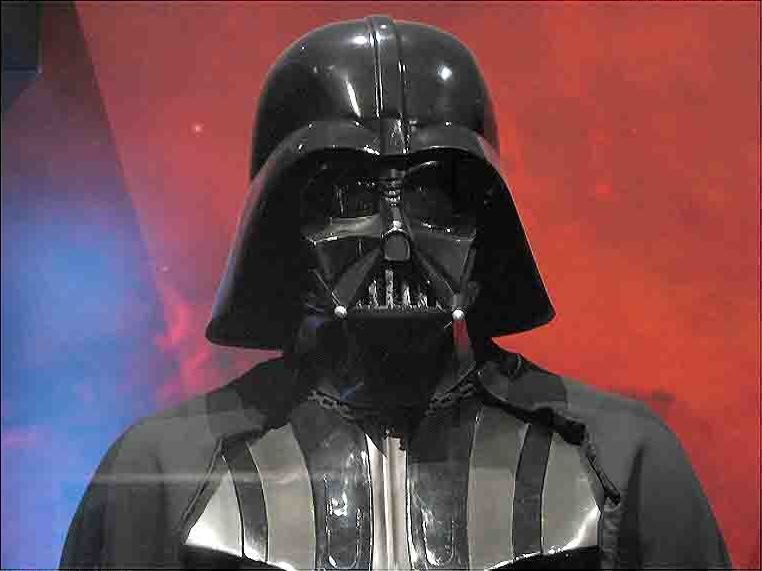
Now, let’s explore the dark side of the Force with some of the most iconic Sith characters:
- Darth Vader (Anakin Skywalker): The Chosen One turned Sith Lord, Darth Vader is the epitome of tragedy and power. Once a heroic Jedi Knight, Anakin Skywalker’s fall to the Dark Side is a cornerstone of the Star Warssaga.
- Darth Sidious (Emperor Palpatine): The puppet master behind the rise of the Galactic Empire, Darth Sidious is the Sith Lord pulling the strings. Emperor Palpatine’s political maneuvering and mastery of the Dark Side make him a cunning and malevolent adversary.
- Darth Maul: With a menacing appearance and a thirst for combat, Maul cut a path through Episode I and showcased the raw physicality of the Sith. Despite his brief on-screen appearance, Maul’s legacy echoes through the galaxy.
- Count Dooku (Darth Tyranus): A former Jedi Master turned Sith Lord, Count Dooku is a master duelist and political schemer. Dooku brings a calm and calculated demeanor to the Sith. His role in leading the Separatist movement make him a distinctive Sith figure.
- Kylo Ren (Ben Solo): In the sequel trilogy, Kylo Ren takes the Sith legacy into a new era. Tormented and conflicted, Kylo Ren is a complex Sith with a modern edge. His unpredictable nature and struggle with the Light Side make him standout in the Sith lineup.
Other Essential Star Wars Characters
Of course, Star Wars do not comprise of just the Jedis and the Siths. Here are some of the most important characters with notable roles in the Star Wars universe:
- Han Solo: The charming rogue and Millennium Falcon pilot who shot first. He’s the ultimate space cowboy who makes smuggling look cool.
- Chewbacca: The lovable Wookiee co-pilot with a penchant for roaring, loyal to Han and unbeatable at Dejarik.
- Princess Leia Organa: A fearless leader, diplomat, and member of the Rebel Alliance, known for her iconic buns and quick wit.
- Lando Calrissian: The smooth-talking gambler and former owner of the Millennium Falcon, whose fashion sense is as sharp as his deals.
- C-3PO: The golden protocol droid fluent in over six million forms of communication, with a knack for getting into comical predicaments. C-3PO is built by Anakin Skywalker to help his mother.
- R2-D2: The astromech droid with a brave heart, always ready with a solution in the form of beeps and boops. He contained Leia’s famous message for Obi-Wan: “Help me, Obi-Wan Kenobi. You’re my only hope.” He appeared in all nine of the Skywalker saga films.
- Boba Fett: The mysterious bounty hunter with Mandalorian armor and a reputation for being a relentless tracker.
- Jabba the Hutt: The slimy, yet powerful, crime lord residing on Tatooine, where deals are made and broken.
- Admiral Ackbar: The Mon Calamari commander known for the iconic line, “It’s a trap!” during the Battle of Endor.
- Wedge Antilles: The skilled X-wing pilot, a true unsung hero of the Rebel Alliance, who always manages to survive.
- Padmé Amidala: The regal Queen and later Senator of Naboo, with a spirit as strong as her elaborate wardrobe.
- Captain Phasma: The chrome-armored stormtrooper captain, known for her imposing presence and allegiance to the First Order.
- General Hux: The ambitious and calculating General of the First Order, whose fiery speeches strike fear into the hearts of his subordinates.
- Poe Dameron: The top-notch Resistance pilot, quick with a quip and even quicker with a starfighter.
- BB-8: The spherical astromech droid owned by Poe Dameron. This droid held the iimportant clue to Luke Skywalker’s location in The Force Awakens.
- Finn: The former stormtrooper turned reluctant hero, navigating the galaxy with a mix of bravery and humor.
- Rose Tico: The kind-hearted Resistance mechanic who stands up for what she believes in, even in the face of adversity.
The Iconic Starships and Vehicles
From the sleek and agile to the colossal and powerful, these vessels are as much a part of the saga as the characters themselves.
- Millennium Falcon: She may look like junk, but the Millennium Falcon is the fastest hunk of junk in the galaxy. Piloted by the charismatic Han Solo and his Wookiee co-pilot Chewbacca, this Corellian YT-1300 light freighter brought the Rebel Alliance to many victories, including the destruction of not one but two Death Stars.
- X-wing Starfighter: The Incom T-65 X-wing is the Rebel Alliance’s go-to starfighter. Known for its versatility, agility, and distinctive split-wing design, X-wings are the backbone of many epic space battles. Luke Skywalker’s Red Five X-wing is particularly legendary.
- TIE Fighter: On the Imperial side, we have the Twin Ion Engine (TIE) Fighter. These speedy, agile fighters are the standard Imperial starfighters. Their distinct howl is enough to send shivers down the spine of any Rebel pilot.
- Slave I: Boba Fett’s Firespray-31-class patrol and attack craft, Slave I, is an unmistakable and intimidating vessel. Its unique vertical design and seismic charges make it one of the most memorable ships in the galaxy.
- AT-AT Walker: Imposing and heavily armored, the All Terrain Armored Transport (AT-AT) is the Empire’s mechanical giant. Used to crush Rebel bases and instill fear, these four-legged walkers are as iconic as they are formidable.
- Star Destroyer: Nothing says Imperial might like the Imperial-class Star Destroyer. These colossal capital ships dominate the starfields, serving as command ships, carriers, and symbols of the Empire’s authority. The sight of a Star Destroyer descending from hyperspace is an unforgettable Star Warsmoment.
- Slave II: The Firespray-31-class patrol and attack craft strikes again as Jango Fett’s personal ship. Sleek, deadly, and armed to the teeth, Slave II is a ship worthy of the galaxy’s most notorious bounty hunter.
- Speeder Bikes: Zooming through the forests of Endor or the deserts of Tatooine, speeder bikes are the go-to choice for rapid reconnaissance and thrilling chases. Whether piloted by Scout Troopers or Rebel soldiers, these hovering speed demons excite any planetary pursuit.
- Death Star: It’s not exactly a “vehicle,” but the Death Star deserves a mention. This moon-sized space station, armed with enough firepower to obliterate entire planets, is the ultimate embodiment of the Empire’s destructive power. Both Death Stars became the focal points of epic battles that determined the fate of the galaxy.
The Cultural Significance of Star Wars
You probably already know that Star Wars is a worldwide phenomenon. Let’s see how it has left a mark in the entertainment industry and the global pop culture as a whole:
1. It transcended generations
Since the original film’s release in 1977, Star Wars has managed to capture fans and audiences across generations. Parents who grew up with the original trilogy are now introducing their children to the saga, creating a multi-generational fanbase.
2. It revolutionized special effects in filmmaking
Before Star Wars, the field of special effects in films had not substantially advanced since the 1950s. But when Star Wars became commercially successful – it became a turning point, creating a surge in state-of-the-art special effects during the late 1970s. George Lucas and his team at Industrial Light & Magic (ILM) pioneered techniques that set new standards for cinematic storytelling, influencing countless filmmakers and paving the way for modern blockbusters.
3. It introduced the blockbuster culture
Along with Steven Spielberg’s Jaws, Star Wars played a pivotal role in establishing the blockbuster culture. In fact, the success of Star Wars birthed the blockbuster era – demonstrating that a film could become a cultural event. This trend involved simultaneous releases on many screens and emphasized the importance of building lucrative film franchises. This paradigm shift in filmmaking shaped the way studios approach the release and marketing of major films to this day.
4. It pioneered the idea of movie merchandising
In addition to changing the way movies were released, Star Wars set a precedent for major film trilogies, demonstrating that the merchandising rights on a film could often generate more revenue than the film itself. Star Wars forever changed how studios approach the marketing and licensing of their intellectual properties. As we can see, Star Wars didn’t just conquer the big screen; it conquered toy shelves, clothing racks, and every conceivable product in between.
5. It saved 20th Century Fox from bankruptcy
20th Century Fox is one of the leading Hollywood studios today – and you probably have a couple of movies you love created by the studio. Within three weeks after the release of Star Wars (1977), the studio’s stock price doubled to a record high. Before 1977, the highest annual profit for the company was $37 million, but that year, it broke the record by posting a profit of $79 million. It transformed Fox from an almost bankrupt production company to a giant media conglomerate.
6. It influenced future filmmakers
Numerous filmmakers have cited Star Wars as a major influence on their careers, as the film was one of the first to connect genres together to form a new, high-concept genre for filmmakers to build upon Directors like Steven Spielberg, James Cameron, and J.J. Abrams, among others, have expressed their admiration for George Lucas’s storytelling and technical innovations. The impact of Star Wars is evident in the DNA of many subsequent sci-fi and fantasy films.
7. It redefined genre expectations
Star Wars blended elements of mythology, fantasy, and science fiction in an unprecedented way. It redefined genre expectations and introduced audiences to a galaxy that felt both familiar and entirely new. This genre-bending approach has inspired storytellers to experiment with conventions and push creative boundaries.
It even helped launch the late 70s to early 80s science fiction boom, making science fiction a new blockbuster genre. Sci-fi films are now seen to draw heavy influence and inspiration from the original Star Wars trilogy.
8. It changed the narratives of Hollywood films.
Banking on the success of Star Wars, Hollywood fundamentally switched its focus from making deep, meaningful stories based on dramatic conflict and themes to special-effects-laden blockbusters. From producing personal films, filmmakers focused on making fast-paced, big-budget films that will appeal to younger audiences.
9. It fostered a huge fandom
The Star Wars fandom isn’t just a collection of moviegoers; it’s a global community that spans cultures and continents. Conventions, fan clubs, fan fiction, and cosplay are just a few expressions of the passion that Star Wars has ignited in its fans. The sense of belonging to a larger cultural movement is a testament to the franchise’s enduring appeal.
10. Reference to Star Warsis part of everyday lingo
In many English-speaking countries, references to Star Wars themes and main characters are casually made, as people mostly assume that others will understand the reference. It’s because the Star Wars film was such a cultural unifier – its blending of genres made it appreciable to a wide spectrum of people. Phrases like “May the Force be with you,” “evil empire,” “I am your father,” and “Jedi mind trick” have become part of the popular lexicon.
11. It spawned a lot of parodies, mentions, and fan fiction
Since the Star Wars saga has greatly impacted modern American pop culture, the film and its characters have been parodied and referenced in countless films and TV productions. The franchise also inspired fans to create their own non-canon fiction set in the Star Wars galaxy. Many wrote their own fan fiction and fan films. There is even an annual Official Star Wars Fan Film Awards sponsored by Lucasfilm to recognize filmmakers and the genre.
Conclusion
Star Wars is more than a series of films and media – it’s a legend, a cultural touchstone that has reshaped the entertainment landscape. Its impact is felt not only in box office numbers but also in the way stories are told, movies are made, and fans engage with their favorite franchises. Fans debate about their different favorite Star Wars moments, and all of them are iconic. Star Wars has become a shared language that continues to inspire, entertain, and unite audiences worldwide. May the Force be you as you continue to explore the galaxy far, far away.
